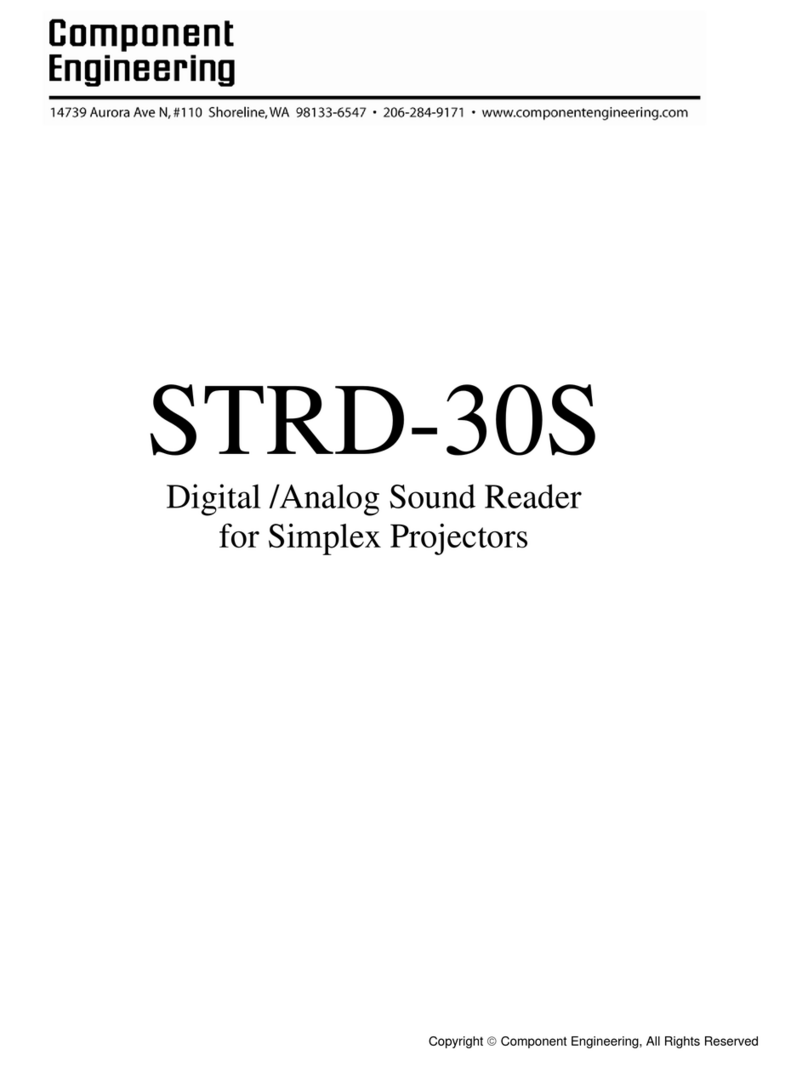
5
Adjustment of the two light sources
Adjust the analog LED
The video output cable from the digital pre-amp in the sound
head to the Dolby DA-10 or DA-20 is harder to deal with because
it is so stiff and heavy. The cables are shipped with both ends
terminated in their respective connectors. The smaller connector
(the sound head end) can be gotten through 3/4" conduit, but care
must be taken if there are many bends and particularly when going
through any conduit fittings. The connector is polarized and will
plug onto the video pre-amp only one way.
Alignment
Preliminary:
Because you are dealing with two soundtracks, and because you
are starting from scratch, you will have to go back and forth
between the two media while you get everything optimized.
Mostly, this means the adjustment of the two light sources. The
good news is that as already mentioned, the two optical assemblies
have been preset so that you have a beginning point. Their focus
and azimuth may not be exactly correct for your sound head, but
they will be close enough to get you started. Loosen the clamp
screw of both of the copper LED mounts until they can be moved
easily, but will stay where you put them when you let go. It is
easier to grab both of the mounts when doing the analog LED
(which is the inner one), and so it is best to do it first.
Analog:
Adjust the analog LED by eye until it looks as though it is
opposite the lower lens. In the cinema processor, turn both the
level and high frequency adjustments all the way down so that
both channels will be essentially identical. Thread a loop of Dolby
Cat. No. 97 (a very convenient method is to make a loop of 1/2
Cat. No. 97, and 1/2 “Buzz Track”) and look at it on your
oscilloscope just as you would for a normal “A” Chain setup.
Digital pre-amp




























